Eight months after the earthquake and tsunami devastated Japan’s Tohoku region, conditions have obviously improved, and in those locations not directly hit by the disaster, life has mostly returned to normal. Or at least a new, post-earthquake version of normal.
In those ports and towns that bore the horrible brunt of the tsunami, however, it’s a very different story altogether. The area affected is so large, and the destruction so all-encompassing, that the clean-up, while well underway, is a task that is clearly going to take an awfully long time to complete. And in Kesennuma, this aspect is painfully clear.
Along the outer areas of tsunami damage, some businesses have started to operate again, and people once more pass through on their way to work or school.
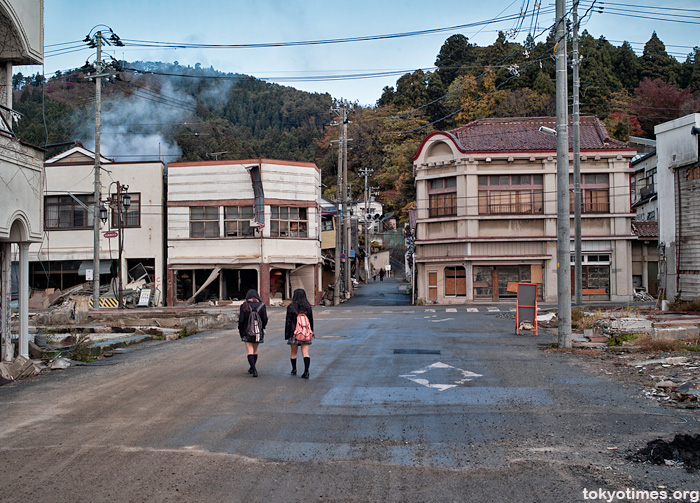
But nearer the sea, it’s still a completely different scene. A truly shocking landscape that the relative silence and stench of stagnant water pools only add to.
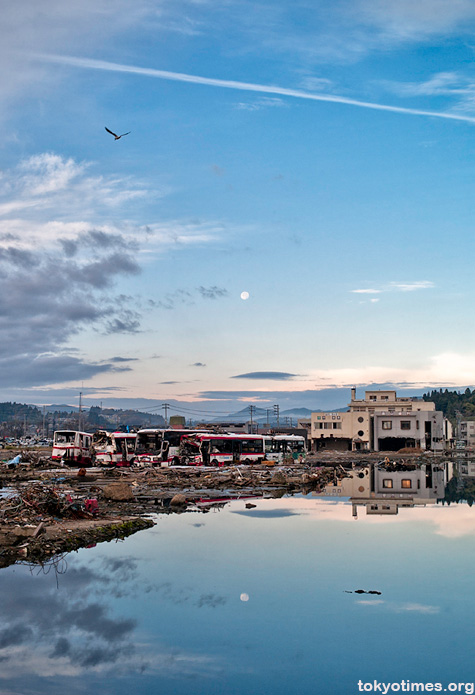
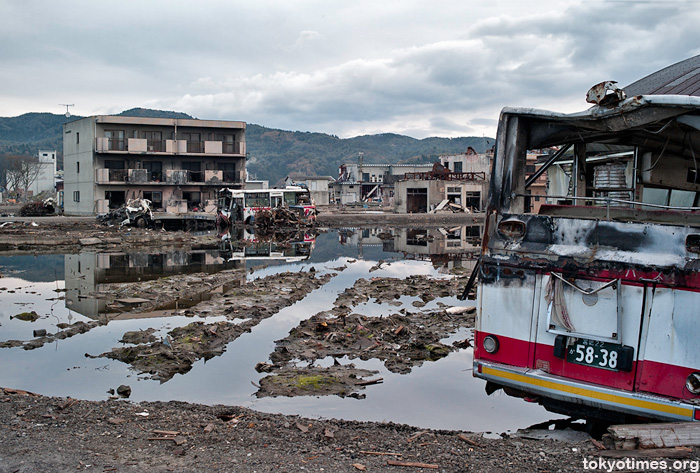
Temporary roads mean trucks, diggers and the like can get in and out, but the sheer scale of the damage, and the massive expanse it covers, means that despite all that’s been achieved, there’s still so much more left to do.
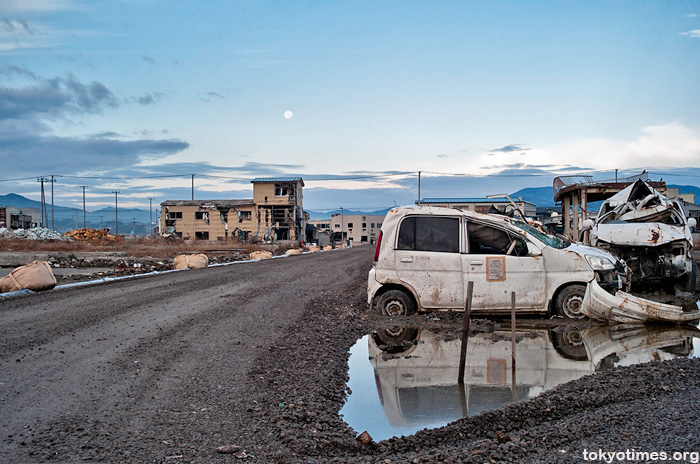
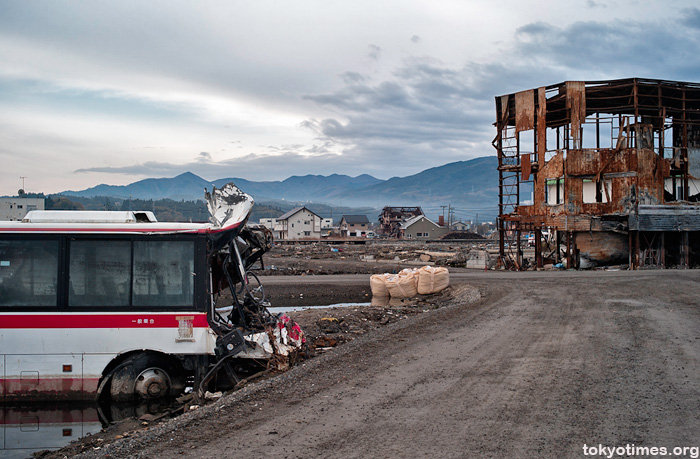
Yet until it is, a large part of the city remains a painful reminder of the forces that surround us, and, having spoken to several people who were caught up in the events of March 11, the random nature of what somehow survived, and what didn’t. Plus, far more disturbingly, the horrible decisions people had to make that very quickly resulted in their survival, or death.
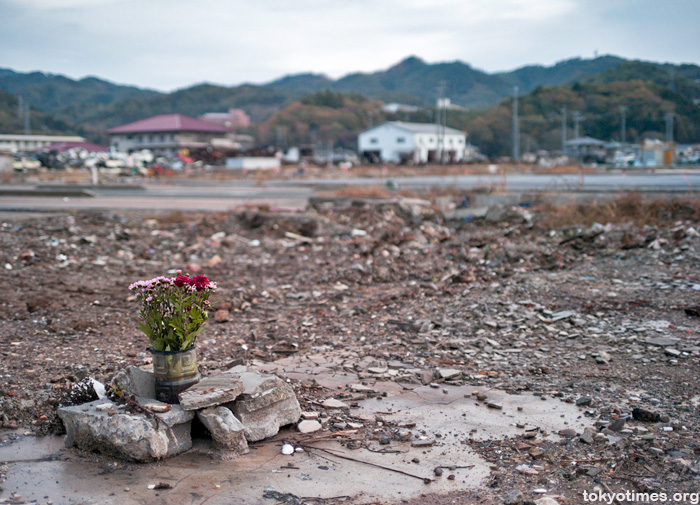
Provided, of course, that they even had the option of a decision. Many, it is clear, did not. Without transportation, or relative youth, it’s hard to imagine how some people could have covered the ground needed to reach safety.
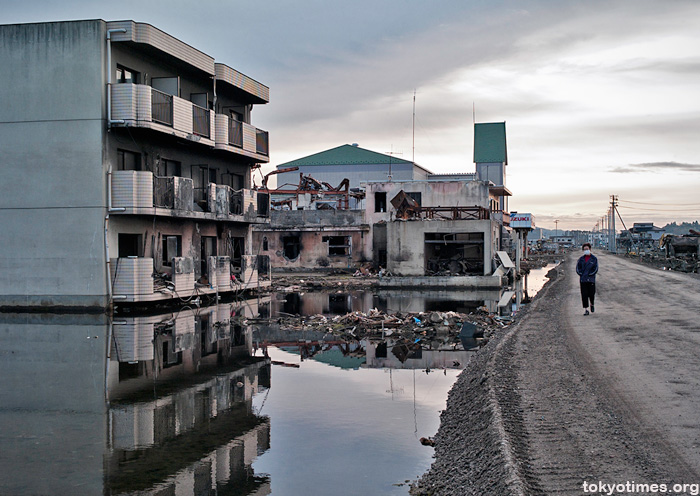
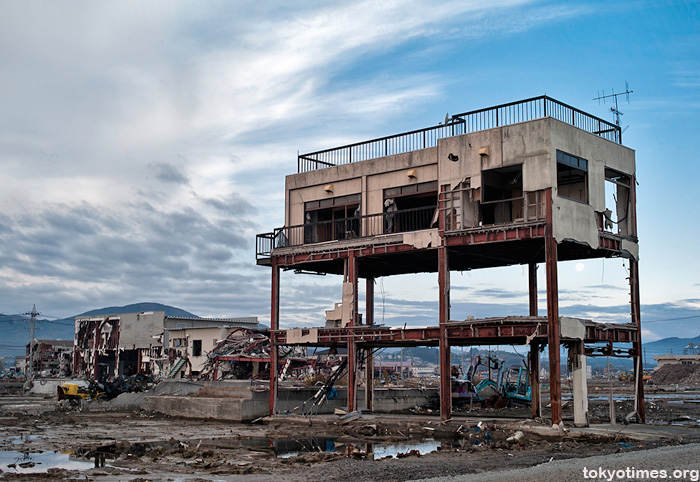
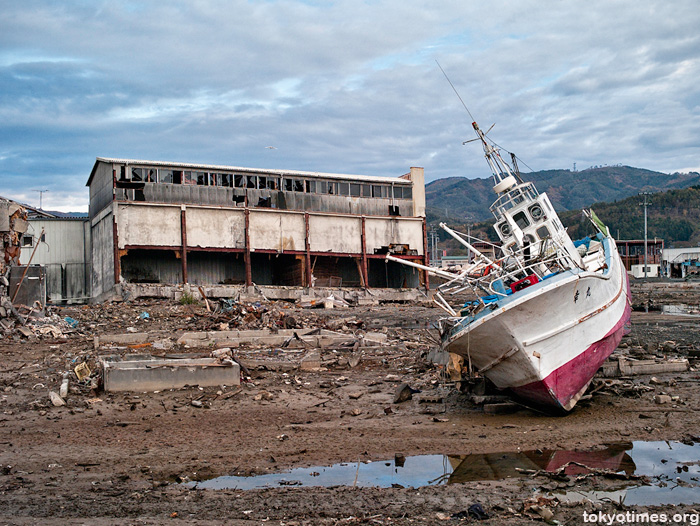
Especially so when considering the speed the waves came in, and the frankly astonishing force they produced.
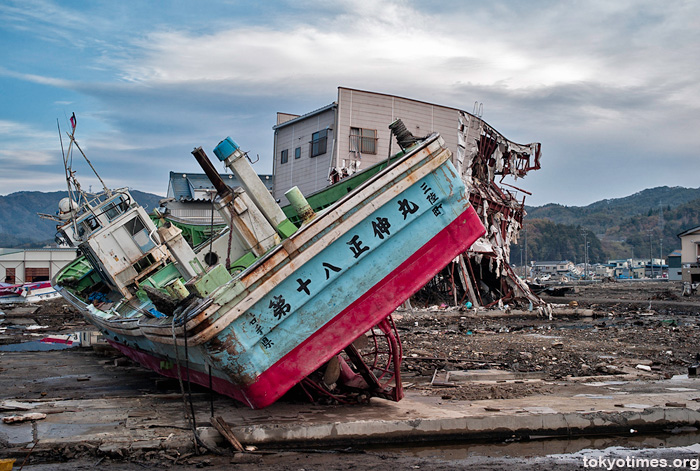
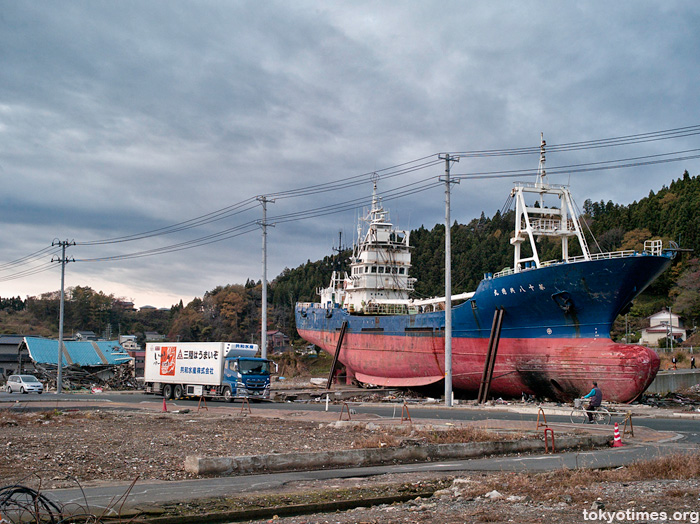
The horror of which is also visible slightly further north in Rikuzentakata, where there is now only a sense of what was. Land that once contained a city now has practically nothing to show but a solitary, and inexplicably untouched, tree; its presence as incomprehensible as everything else that happened on that fateful day eight months ago. The sight of which, even after seeing countless videos and photographs, was no preparation for what it’s really like.
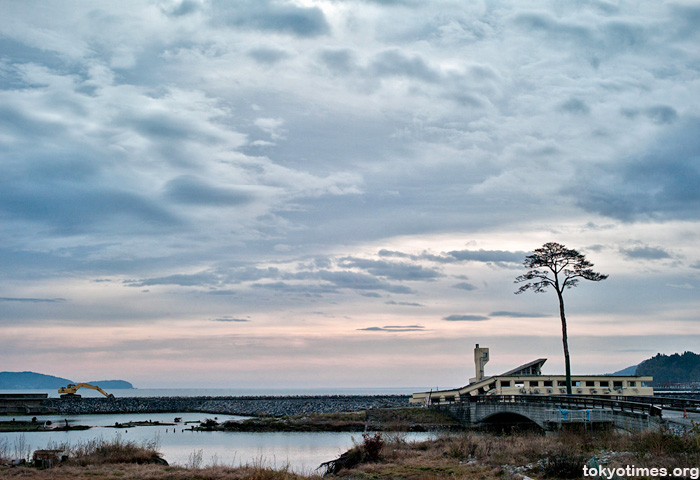
Tamh says
Beautiful images Lee, as always. Kinda hard to watch them, if I may.
This time I want to write a bit about a side of the Tohoku disaster that some people now want to keep shut. In my country, some people were quick to dismiss it, as they actually believe Japan runs on hoverboards and supertechnology. While Japan somehow does run on tech, it also runs on human/will power, and with that comes our need to accept how Nature reacts about our presence, in every single inch of our world.
And then, when I got to think about all the people who died, who suffered and whom are suffering right now about this disaster, is that I realize, how defenseless we really are everywhere. But that’s what gives us, humans, the strength to rebuild, to overcome our problems and to try to carry on. I always admired Japanese people for being like that, so courageous, so strong.
That’s why you have to rebuild yourself and rise, Japan!
Lee says
Thanks. Yeah, they were hard to take too. It really was shocking to see the level of destruction.
Yes, we truly are defenceless. No amount of preparation could have could have dealt with those forces. The only other option I suppose is to live elsewhere, but that’s not necessarily a real option in many cases. And I agree, the resilience people have shown really is incredible. It can’t have been easy. Still can’t be. But people get on with their lives nonetheless.
Julie H. says
Wow, even having been in Tokyo on 3/11 and after, I still can’t totally grasp the magnitude of what happened. Thank you for this post, it’s good to remind everyone of how much still needs to be done. I for one will never forget what the people there went through.
Gorgeous photos of a horrible disaster. I have to ask if they are high def? If they are, they are well done, much better than a lot of high def photos I see.
Lee says
Yes, I think that the problems at Fukushima Daiichi quickly overshadowed the devastation caused by the tsunami, and whilst it’s not forgotten, it certainly doesn’t get the coverage it deserves. And like you said, so much needs to be done. That’s just the clearing up too. Then there’s rebuilding. Both in term of buildings and people’s lives. It’s hard to imagine how long it’s going to take.
As for the photos, no, they aren’t HDR. I edited them of course, and brought out the clouds and sky. We were lucky to get such nice weather and interesting cloud formations. The light was fantastic too, as we got there pretty much at dawn.
Peta says
Great photos! Still very hard to look at though 🙁 Even harder really being there, I’m sure…
Lee says
Thanks Peta. Yes, I thought all the footage and images I’d seen would have prepared me for what we saw, but it didn’t. Not at all really.
Ed says
I couldn’t agree more with the comments before me. Thanks for providing us with the coverage that the mass media didn’t. They somehow lost interest in the destiny of so many people.
Lee says
You are welcome Ed. The nuclear issue without a doubt needs all the coverage it can get, but at the same time, so does the ongoing clean-up and recovery. Sadly it seems that despite round-the-clock coverage, the media can only focus on one story at a time.
winnie says
Superb pictures, heavy-hearted to look through them.
Thank you for sharing.
I love the last picture as the tree in there seem to represent Hope and Resilient .
Lee says
Thanks winnie.
Yes, I guess there is that aspect about the tree. There’s certainly resilience in the area. The longer the clean-up and rebuilding takes though, the harder hope may be to maintain.
willy says
I went to Kessenuma for the weekend in 2004. Had a great time, and got to experience the sanma festival, where they barbecued hundreds of the fish, fresh off the boat, at 6 am in the morning and gave them away- all you can eat- for free!
Lovely town and lovely coast.
… Its just heartbreaking…
Lee says
I’ve heard of that festival Willy. I can only imagine how much fun it must have been. Let’s hope that one day it will happen again.
Linette says
Thank you for the post. Was it difficult to get to these areas? Are there still ways to help the people who live in these areas? It’s still painful to look at, but so glad you gave us the opportunity. The sound was a nice touch and made it more surreal.
Lee says
Not at all Linette, we just drove up from Tokyo with no problems whatsoever. And yeah, thee are still lots of volunteers going up to help out.
I’m glad to hear the audio added another dimension. One thing that struck me was how nothing I’d seen had really prepared me for what it’s actually. Of course I’m acutely aware that it’s the same problem with these photos, but my hope was that the audio may help to at least try and get across a bit of the atmosphere which surrounds the place.
Meow • Japan & Urbex says
I missed that post but just saw it retweeted by @hikosaemon. Interesting, we went to the same place at the same time again! We should share the car next time 😉 Even though the area looks really depressing, I met many happy people on the way, enjoying life again. Overall, I felt more positiveness and motivation in those people than the salary-men we see in Tokyo subway everyday. Funny how happiness goes naturally to people who needs it the most, to survive.
Lee says
No way. One day we’ll bump into each other! But yeah, sharing a car would make much more sense.
I know exactly what you mean. Heading home on the train yesterday I thought exactly the same thing. People appeared miserable, when in reality they (probably) have so much to be grateful for. And like you said, a lot of people up there seemed much more positive. Certainly more friendly, anyway.
Francesco says
Such a horrible disaster, yet you captured certain aspects of the aftermath so elegantly in your photographs. My heart still goes out to all of those who were affected by this disaster.
Lee says
Thanks Francesco. Yes, it’s impossible to imagine what they have been through. And continue to go through.
Nick says
Lovely photos of the horrible aftermath. Very different from watching a video because you can sit there and watch the static image and let it sink in. It’s true the nuclear incident quickly overtook this larger tragedy in the media.
This prompted me to check online for how Matsushima fared. Amazing that their lovely islands protected them (only a 3.8m tsunami) and so they were the only part of route 45 to be relatively untouched. My wife and I went there with our baby when we lived in Japan 3 or 4 years ago, where we met a friend’s relative who features in this article: http://www.japantimes.co.jp/text/nn20110817f1.html
Anyway, thanks again for the window on … hope.
Cheers,
Nick.
Lee says
Thanks Nick. If they capture even a fraction of what it’s like, then I have achieved what I set out to do. And if they offer any hope, even better.
Driving up the coast it was hard to come to terms with the contrasts of total destruction, and then pockets of totally untouched areas. Some areas survived. Some didn’t. Even worse it was the same with people’s lives…
El-Branden Brazil says
For those wishing to help the people in Tohoku, whether through direct volunteerism or fundraising efforts, I suggest joining Foreign Volunteers Japan on Facebook, which has been a networking hub for people wishing to help and make a difference, as well as a point to communicate with NGOs/NPOs. You can also visit our website: http://www.foreignvolunteersjapan.org/
Alain alexandre says
as in this gigantic war, when your photo are insurmountable have seen before, but the two girls reflects the future of Japan
Michael says
Nice shots! These are looking rather more vibrant and contrasty to your useful photos Lee. Any changes in the workflow?
Lee says
Thanks Michael. Sort of, but more a combination of things really. I’d made the decision to take only my new Leica M8 and a 35mm lens with me — the latter of which produces slightly warmer colors. Plus I was out at first light, when we were lucky enough to get really good conditions. Plenty of bright, early morning sun, plus some interesting cloud formations. And to bring out more of the details and those clouds, I upped the tonal contrast quite a bit. All of that really came together for me in the second photograph, which was quite possibly the first one I took.
Brett says
This is a brilliant series of photographs. It’s surprising that the area is still as devastated as it is considering the efficiency and the commitment of the Japanese. It just goes to show how horrible the whole thing must have been.
Lee says
Cheers Brett. It is surprising, but then at the same time it isn’t considering how much damage was caused, and how wide an area it covered. Truly staggering.
sanu tamang says
hi,and thanks a lot for these photographs.actually my friends are planning to go to tohoku for further study and we’re not getting latest information of there.we all know that such disaster is not predictable so to survive and to try build up those areas is the most important now!i hope it will grow very soon cause japan can do it!surely we are seeking for more information.lee, go ahead!
Lee says
No problem. Hope they give you some idea of what it’s like. In some areas anyway.
nacentesan says
Thank you so much for this post! I wanted to know how the situation is… I guess it will take a long time 🙁